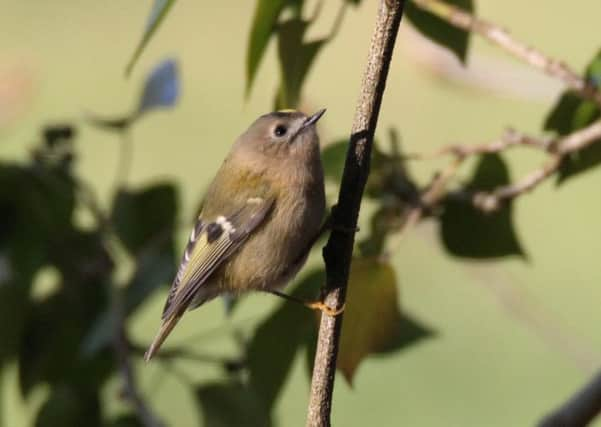Country & Coast: Nickname for tiny winged wonders could be fanciful


Actually, it only just wins the most-diminutive title from its near sibling, the firecrest, which is much rarer in the UK. There is barely 1cm in length between them, and through binoculars it is just as difficult to distinguish one from the other unless you get close enough to see the white stripe above the firecrest’s eye. That is often a hard thing to pull off, though, since both species tend to like the safety of treetops, goldcrests tending to favour conifer plantations, where they move incessantly through the sprays of pine needles cleaning them of small insects.
In Yorkshire as in many other parts of the UK the goldcrest was known as the golden-crested wren for many years, a reference to the black and yellow stripe which runs lengthways along the top its head and the yellow shining like gold in good light. However, it is not related to the wren.
Advertisement
Hide AdAdvertisement
Hide AdQuite how the goldcrest came to be known as the woodcock pilot on the Yorkshire coast is not entirely clear, but that is the folk name given to it in an old book. One explanation - and one which I would dearly love to accept since it conjures up a wonderful image - is that goldcrests have been known to cheekily hitch a lift on the back of a woodcock, a bulky wading bird which happens to share the goldcrest’s love of coniferous woodland.
However, an alternative theory - and one which fits the fact that the nickname “woodcock pilot” is used only on the Yorkshire coast - is that the arrival of a large number of migrating goldcrests in autumn is closely followed by big flocks of woodcock. The name may have been first used by fishermen, who reported seeing them alight on their smacks in the North Sea and then, a couple of days later, the appearance of woodcocks. Certainly, England is a favourite destination for birds escaping the harsher winters in Germany and other countries around the Baltic. They start arriving in late August and the stream continues until early November. Thomas Nelson in his The Birds of Yorkshire (1907) records a “great rush” of them in 1882 when new swarms arrived daily, covering the hedges and sand dunes of the Spurn peninsula.
They are highly susceptible to severe winters, the last major crash of their population being in 2009-10. However, it seems to take them just a couple of good nesting seasons to recover their numbers.
Unless you live near conifers, or there is a sudden cold snap, they are unlikely to be seen in your garden.